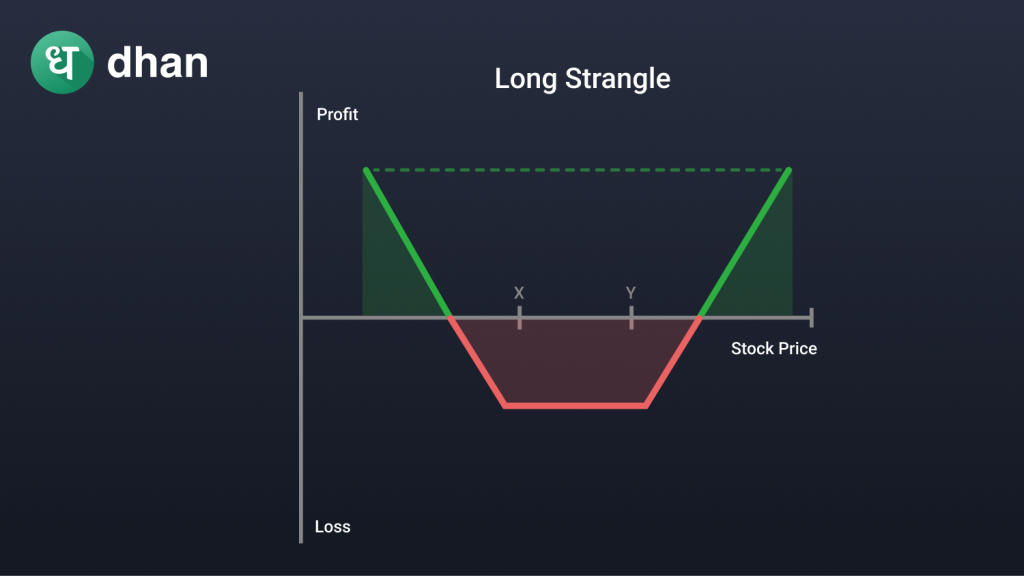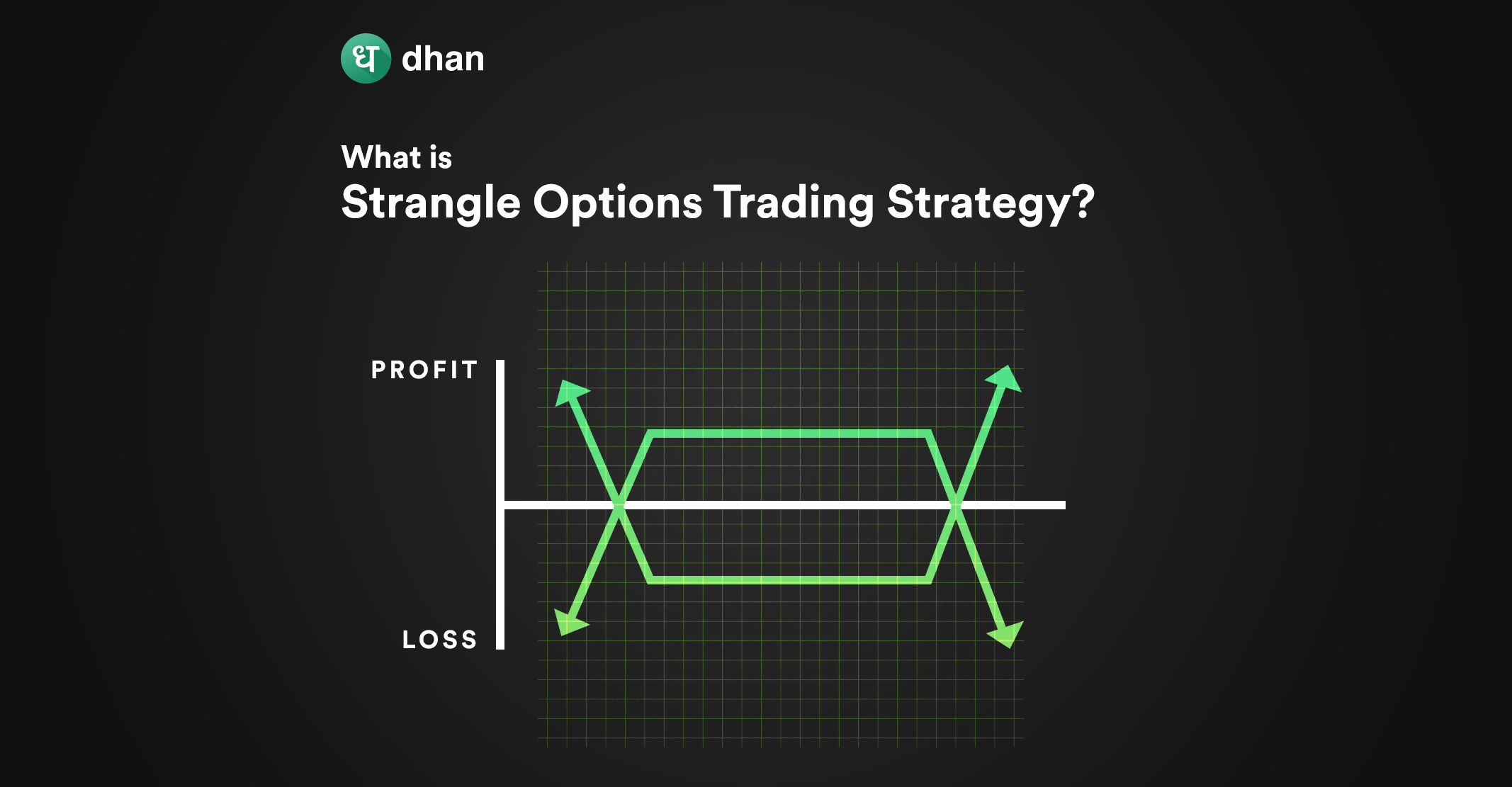The stock market is an interesting place from an analysis perspective. Even the smallest news (good or bad) can push the market (up or down). Often, it’s challenging to forecast the direction of the market. That’s why options trading strategies like Strangle exist. What is the Strangle Option Strategy? Read on!
What is Strangle Strategy?
Strangle Option Strategy is an options trading strategy where you buy or sell a call and put of the same underlying financial instrument but with different strike prices and the same expiry.
A trader would initiate a Strangle if they believe that the underlying will move in some direction, although the direction itself may be unclear. The Strangle will work as long as there’s a significant change in the price of the underlying.
Whether that price is moving upwards or downwards, there’s a Strangle that can solve both scenarios. We’ll get to that in the next section. For now, check out the payoff graph below to see how the profit and loss of a Strangle Strategy works.
You must’ve noticed similarities between the Straddle and Strangle Options Strategies. Both strategies involve buying a couple of calls and puts. But there are differences and one of them stands out.
Strangle is the more affordable alternative to the Straddle because you’d be buying an OTM call and put instead of an ATM call and put. Want to know more about calls and puts? Read this blog: Different Types of Options in Trading
How Does Strangle Options Strategy Work?
So far, we’ve established that you’d have to buy a call and a put with different strike prices but the same expiry to execute a Strangle. What you also need to remember is the number of calls and puts you buy – they should be the same in quantity (f&o lot size).
For example, if you buy 10 lots of a Nifty call option, you should do the same thing for Nifty puts if you want to execute a Strangle. This is known as a Long Strangle, by the way. Going long in any instance means “buying”.
A Long Strangle is where you buy calls and puts. The opposite of this is a Short Strangle where you’d sell calls and puts with different strike prices but the same expiry for the same underlying.
The price of an options call and put is often intertwined with the underlying’s movement in the market. If the underlying is surging, call options are known to gain value whereas puts drop.
Flip the switch – puts will gain value when the price of the underlying starts to fall. A Long Stragle comes into the picture in these two scenarios. What if the underlying trends sideways? Short Strangles. Continue reading to know more!
When to Use Long Strangle Strategy
A Long Strangle is typically used before a big event that has the potential to drive the price of a security above or below the breakeven points. Think of earnings season or big events like the Adani Fiasco.
The beautiful thing about the Long Strangle is that your loss will be limited to the premiums paid whereas there’s no ceiling on the profits as long as the underlying experiences a relatively high swing in prices.
The image below will show you the pay-off graph of a Long Strangle Options Strategy.

When to Use Short Strangle Strategy
You’d normally use a Short Strangle when a security is trading in a range, effectively flat or neutral between the breakeven points. The reason could be a lack of news or simply because of the underlying’s fundamentals.
Your profits in a Short Strangle will be limited to the premiums earned as long as the security trades within the range of strike prices. Not to forget, the options (which are already OTM) should expire worthless for your Short Strangle to work.
Pros & Cons of Strangle Options Strategy
An options trading strategy like Strangle gives you the liberty to profit of upward, flat, or downward swings. You could say that this all-weather approach is one of its pros.
In fact, you could say that a Strangle has the potential to generate unlimited profits and by now, you’d know the caveat for achieving this – a significant swing in prices either upwards or downwards.
Even if there’s no movement and the option is flat, your can Short Strangle your way to profits. But the devil lies in the details. A Strangle makes use of OTM call options. Two factors to note here.
OTM call options are more prone to the effects of time decay because they’re closer to expiry. As you may know, an options contract loses value the closer it is to expiry. This has the potential to bring down your overall profits, even if you take premiums into account.
Furthermore, the implied volatility of an OTM put is relatively high, regardless of whether you’re going long or short. Of course, you’re going to balance it out with an OTM call which is known to have lower implied volatility, but there’s still a degree of risk.
Conclusion
The Strangle Option Strategy involves buying or selling a call and a put for the same underlying instrument at different strike prices but the same expiry. The goal of the strategy is to generate maximum profits due to significant price swings.
You could go long or short with the Stragle Strategy. A Long Strangle is used when there are price swings expected. A Short Strangle is used when the underlying is trending sideways or in a range.
Like this? Then you’ll love:
- What is Iron Condor Strategy?
- What is the Butterfly Option Strategy?
- All You Need to Know About Options Trading Margin



